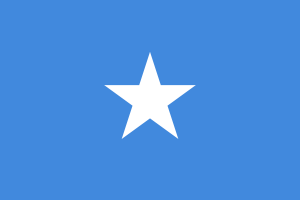Language/Somali/Vocabulary/Introducing-Yourself
| ◀️ Basic Greetings — Previous Lesson | Next Lesson — Personal Pronouns ▶️ |
In this lesson, we will explore the essential vocabulary and phrases you need to introduce yourself in Somali. Being able to introduce yourself is a fundamental skill when learning a new language, as it opens the door to conversations and connections with others. In Somali culture, greetings and introductions are important, reflecting respect and friendliness. In this lesson, you will learn how to say your name, ask someone their name, and share basic personal information such as your nationality, profession, and interests.
We will break down the lesson into the following sections:
Importance of Introducing Yourself[edit | edit source]
Introducing oneself is not just about sharing your name; it's about creating a connection with others. In Somali culture, introductions can often lead to deeper conversations and friendships. A warm introduction sets the tone for future interactions and shows respect for the person you are speaking to. This lesson will equip you with the phrases and vocabulary necessary to make a positive first impression.
Key Vocabulary for Introducing Yourself[edit | edit source]
Here, we will cover the essential phrases and vocabulary you need. When introducing yourself in Somali, you typically start with a greeting, followed by your name, and then share a few details about yourself. Below are some key phrases:
| Somali | Pronunciation | English |
|---|---|---|
| Iska warran? | iskā wārān? | How are you? |
| Magacaygu waa... | māgacāygu wā... | My name is... |
| Adiguna? | ādīgūnā? | And you? |
| Waxaan ahay... | wāxān āhay... | I am... |
| Waxaan ka imid... | wāxān kā imīd... | I am from... |
| Shaqadayda waa... | shāqadayda wā... | My profession is... |
| Waxaan xiiseeyaa... | wāxān xīseeyā... | I am interested in... |
| Mahadsanid | māhād sānid | Thank you |
Structure of an Introduction[edit | edit source]
A typical introduction in Somali can follow this structure:
1. Greeting: Start with a friendly greeting.
2. Your Name: Share your name using "Magacaygu waa..."
3. Ask Their Name: Use "Adiguna?" to ask their name back.
4. Nationality/Location: Share where you are from with "Waxaan ka imid..."
5. Profession/Interest: State your profession or interests using "Shaqadayda waa..." or "Waxaan xiiseeyaa..."
6. Closing: Thank them or express pleasure in meeting them.
Example Introductions[edit | edit source]
Let's look at some examples of complete introductions:
| Somali | Pronunciation | English |
|---|---|---|
| Iska warran? Magacaygu waa Amina. Adiguna? Waxaan ka imid Muqdisho. Shaqadayda waa macallimad. | iskā wārān? māgacāygu wā Amina. ādīgūnā? wāxān kā imīd Muqdisho. shāqadayda wā mācallīmād. | How are you? My name is Amina. And you? I am from Mogadishu. My profession is a teacher. |
| Iska warran? Magacaygu waa Samir. Adiguna? Waxaan ka imid Hargeysa. Waxaan xiiseeyaa ciyaaraha. | iskā wārān? māgacāygu wā Samir. ādīgūnā? wāxān kā imīd Hargeysa. wāxān xīseeyā ciyaaraha. | How are you? My name is Samir. And you? I am from Hargeisa. I am interested in sports. |
Practice Exercises[edit | edit source]
To reinforce your learning, here are some practice scenarios for you to apply what you’ve learned:
1. Fill in the Blanks:
- Create a dialogue where you fill in your name and where you are from.
2. Role Play:
- Pair up with a classmate and take turns introducing yourselves using the vocabulary from the lesson.
3. Write Your Introduction:
- Write down your introduction in Somali and translate it into English.
4. Listening Exercise:
- Listen to a Somali speaker introduce themselves and write down what they say.
5. Matching Exercise:
- Match the Somali phrases to their English translations.
6. Group Activity:
- In small groups, practice introducing yourselves to each other and ask follow-up questions.
7. Q&A Session:
- Create a list of questions you might ask someone after they introduce themselves.
8. Flashcards:
- Create flashcards with key phrases for self-introduction for quick revision.
9. Record Yourself:
- Record your introduction in Somali and listen to it to improve pronunciation.
10. Feedback Loop:
- Present your introduction to the class and get feedback from your peers.
Solutions and Explanations[edit | edit source]
Now let’s go through the solutions for the practice exercises:
1. Fill in the Blanks:
- Example: "Magacaygu waa [Your Name]. Waxaan ka imid [Your City]."
2. Role Play:
- This allows for practical application and builds confidence.
3. Write Your Introduction:
- Example: "Magacaygu waa Ayaan. Waxaan ka imid Baydhabo. Shaqadayda waa injineer."
4. Listening Exercise:
- Listen for key phrases like "Magacaygu waa..." to identify the person’s name.
5. Matching Exercise:
- Example: Match "Mahadsanid" with "Thank you".
6. Group Activity:
- Engaging with peers helps reinforce learning.
7. Q&A Session:
- Example questions: "Maxaad jeceshahay?" (What do you like?)
8. Flashcards:
- Useful for memorization.
9. Record Yourself:
- Helps improve fluency and pronunciation.
10. Feedback Loop:
- Constructive feedback encourages improvement.
In summary, this lesson has equipped you with the fundamental phrases and structure for introducing yourself in Somali. Remember, practice is essential for mastery, so try to use these phrases in real-life situations as much as possible. Engaging with native speakers will also enhance your learning experience.
Sources[edit | edit source]
- Free Somali Language Quiz - Test Your Language
- Learn Somali - Teach Yourself Somali (Beginners Audio Book) by ...
- Learn Somali (Teach Yourself Somali, Beginners Audio Book ...
Other Lessons[edit | edit source]
- Weather
- Numbers 1 20
- Basic Greetings
- Relationships
- Offering or asking for help
- Food
- Family
- Fruits and Vegetables
- Drinks
- Feelings and Emotions
| ◀️ Basic Greetings — Previous Lesson | Next Lesson — Personal Pronouns ▶️ |

